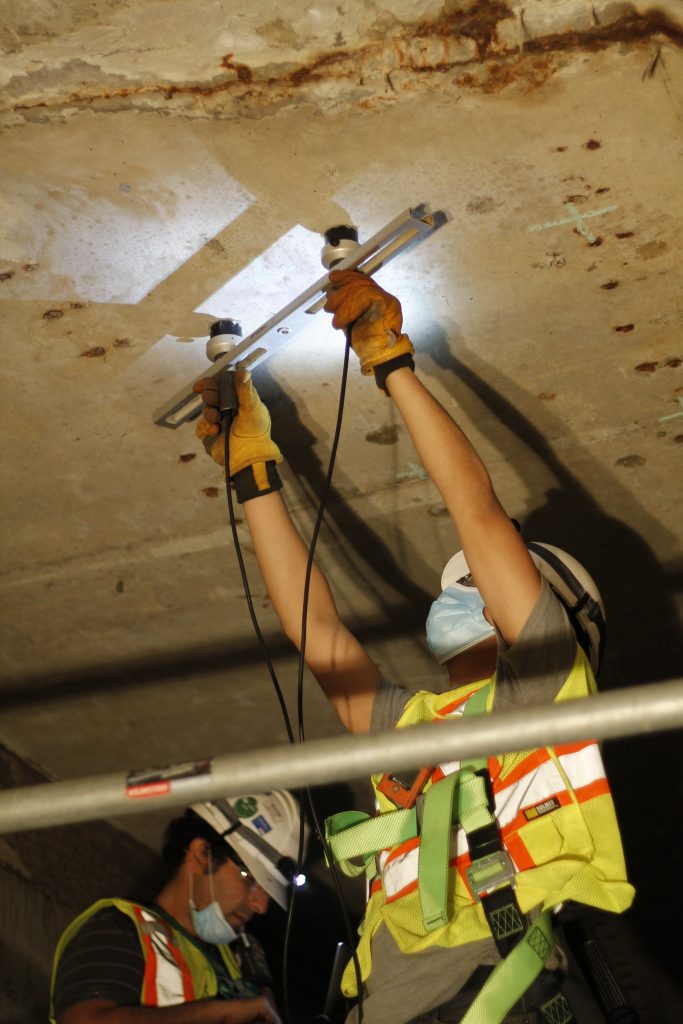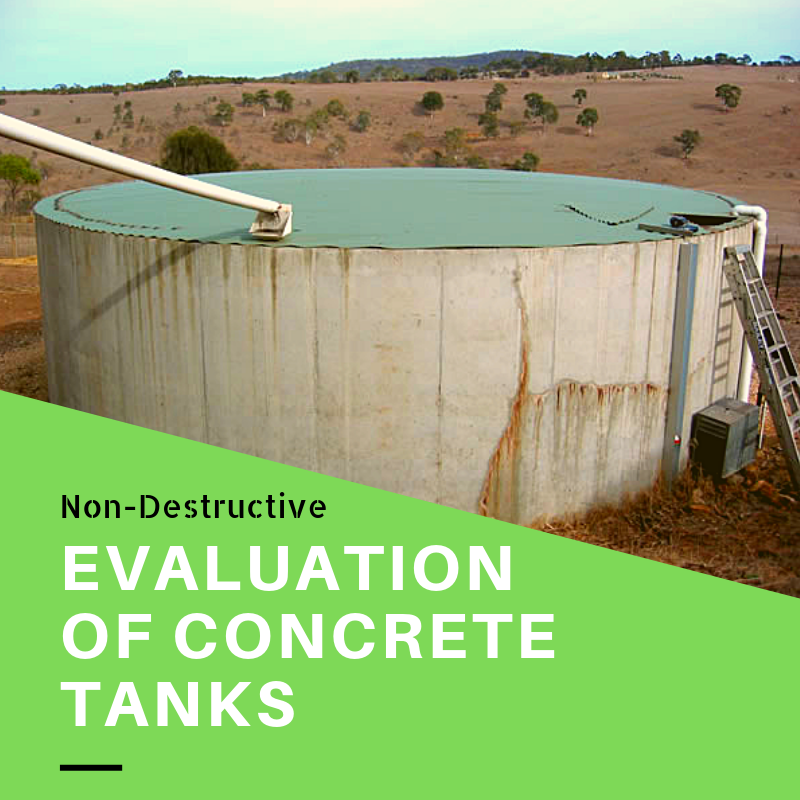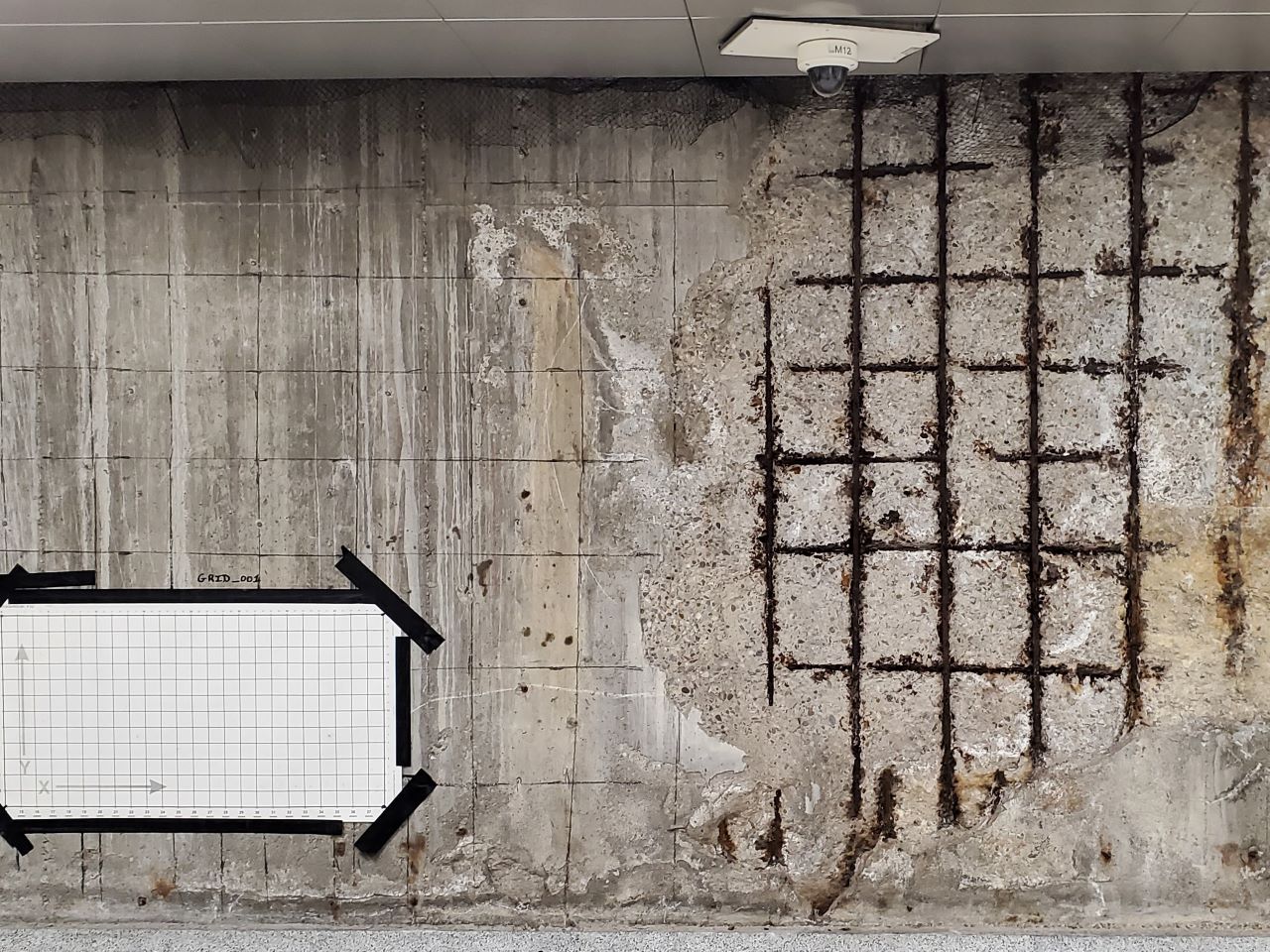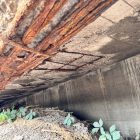This article describes non-destructive testing (NDT) applications and evaluation in the inspection and condition assessment of culvert structures. Depending on their particular application, concrete culverts can be exposed to water, wastewater, and other chemicals. This can result in the deterioration of culverts during their life cycle. Non-destructive testing can help engineers in evaluating the location and extent of defects.
What is a Culvert?
A culvert is generally defined as a tunnel structure that forms an opening through the soil which could span three meters along its width and length. It is constructed under roadways, bridges or railways to allow passage of surface water, livestock, pedestrians or utility lines. The design of a culvert is based on hydraulics, roadway height and other conditions. Culverts are almost the same as pipes but they have a very large size and are made of different materials such as:
- Concrete
- Steel
- Plastic
- Aluminum
- High Density Poly Ethylene (HDPE)
Common Types of Culverts in Construction
- Pipe Culvert (single or multiple) – Pipe or circular culverts are the most widely used type. For single pipe culverts, a larger pipe diameter. In case of very large channels, multiple pipes are used. They are usually made of concrete, steel or HDPE materials with diameters ranging from 1m to 6m.
- Pipe Arch (single or multiple) – Pipe arch culverts are half circle shaped culverts with natural flooring that are suitable for large but stable water flows. They can be singular or multiple depending on the design. They are mostly made of concrete or steel.
- Box Culvert (single or multiple) – Box culverts are rectangular that can be singular or multiple in design. They are generally made with concrete which can also be reinforced. They are not suitable for water flows with large velocity because of the sharp turns due to its shape.
- Arch Culvert (single or multiple) – Arch culvert is similar to pipe arch culvert but are installed with artificial flooring. They are usually preferred to be installed using concrete because steel arch culverts are very expensive. They are very suitable for narrow passages.
- Bridge Culvert – Bridge culverts are provided on canals or rivers and also used as road bridges for vehicles. For these culverts, a foundation is laid under the ground surface. A series of culverts are laid and pavement surface is laid on top this series of culverts.
Hazards and Risks of Culverts
In the province of Ontario in Canada, there are approximately 60,000 culverts below the provincial highways and around 200,000 culverts under municipal roads and streets. The actual number pose a bigger dilemma because the failure of a culvert risk infrastructure damage and loss of life. Damaged culverts can cause soil erosion and water seepage which can damage nearby infrastructure. It could also result in injuries and death. One particular example is the collapse of a steel culvert in Rhome, Texas due to the weight of the school bus causing it to get stuck with its rear in the air. Thankfully, the bus driver was able to rescue the students with no injuries.
Factors affecting deterioration in Culverts
There are a lot of things that could result in the deterioration of a culvert even if they are adequately designed. The different type of material used for the construction also provide different problems. The following factors discuss the different factors that could damage culverts.
- Waterway Adequacy – changes in the surrounding environment causing water to behave differently from the culvert design could eventually cause damage and potentially cause it to break. It could be because of the changes in the stream alignment, upstream land modifications, bank erosion, and anything that would cause the water flowing in the culvert to change drastically.
- Ground hazards – soil movement can cause ground hazards that could deter the performance of the culvert and could also cause it to damage and break. It includes landslides, soil subsidence, snow, ice conditions, and hydraulic erosion. Nearby slopes could also generate rock falls, debris flows, avulsions (stream shifting), and river erosion hazards.
- Beaver activity – Beaver dams located upstream, downstream, and nearby a culvert could cause a potential hazard. Washouts and soil erosion of the soil supporting the culvert will damage the culvert.
- Material Blocking – culverts are designed to handle design flow, but if the culvert is blocked with deposits, sediments, or ice, it may not do so. It will result in excessive ponding, flooding which could cause eventual damage to the culvert.
- Highly corrosive and abrasive environments – Water and soil can cause corrosion and abrasion and are the main form of deterioration experienced by culvert materials. Water and soil’s pH and electrical resistivity can be used as an indicator for corrosion and abrasion, damaging the concrete and steel in culverts.
- Risk of damage due to foundation works – Concrete culverts are at risk of getting damaged due to nearby foundation activity’s direct or indirect effect. It could result in deterioration and defects that could severely impact the service life of the culvert.
Inspection and Non-destructive Testing of Culvertsat regular intervals or when there is a need to do so will ensure the safety and reliability of these structures. Application of NDT methods for inspection and monitoring will help detect and quantify potential defects and deterioration mechanisms at any stage of its useable life. Test results will help assess the condition of the concrete culvert.

Nondestructive Testing in Culverts
Non-destructive testing of culverts can help asset owners and consulting engineers identify potential surface and sub-surface defects in the concrete culverts, and minimize the number of intrusive testing.
NDT methods help engineers obtain a realistic picture of the existing condition of the culvert, and develop better repair strategies and more accurate cost estimates. In general, the NDT methods can help to:
- measure the physical dimensions of the structure
- map the layout of the steel rebar and spacing to some extent
- identify the potential location of defects,
- study the state of certain damages over the life-cycle,
- provide information about durability properties of concrete (permeability, surface electrical resistivity),
- shortening the inspection timeline, to ensure maximum productivity.
Different NDT methods can be used to obtain critical information about the existing condition of concrete tanks. The following section describes some of these methods and their applications.
Impact-Echo method has proven to be extremely useful in evaluating the thickness of concrete elements from one side (e.g., concrete tanks, tunnel lining, culvert wall, bridge abutment), determining the depth and location of subsurface defects (e.g., cracks, voids, honeycombing, debonding) within the concrete, and estimating the depth of surface-opening cracks.
Ground Penetrating Radar (GPR) is a very useful technique for the non-destructive evaluation of concrete. GPR uses pulsed electromagnetic waves to scan concrete. The test method provides an easy means to locate steel rebar or any sub-surface targets (pipes, live conduits, etc.) and estimate the concrete cover thickness.
Ultrasonic Pulse Echo (UPE) effectively evaluates surface and sub-surface defects in reinforced concrete elements. The method involves using shear waves to identify sub-surface targets, such as voids, delamination, discontinuity, disintegration. The process can effectively be used to assess the quality and condition of grouting around the post-tensioning cables and identify if they are filled with grout or not.
Rebound Hammer test provides a practical and cost-effective solution for estimating in-place concrete strength. Recent developments in rebound hammers and improved guidelines for evaluating concrete strength can help structural engineers and condition assessment professionals accurately classify concrete strength and make data-informed decisions on the location of cores in a cost-effective framework.
Ultrasonic Pulse Velocity (UPV) can be used for quality control of new construction and evaluation of structural integrity in existing facilities. In addition, the test setup can be customized to estimate the depth of cracks in walls and slabs. Combining rebound hammer test and ultrasonic test can provide information about the quality, homogeneity, uniformity of concrete. Moreover, the test results can be combined to predict the in-place strength of concrete.
Half-Cell Corrosion Potential Test is an effective electrochemical test procedure widely used among condition assessment engineers to evaluate corrosion. The test can provide information about the likelihood of having active corrosion. If corrosion is involved, the test provides a cost-effective screening tool for identifying the locations and areas with a higher probability of corrosion.
References
Canada, T. (2012, March 13). Appendix – Guideline for Culvert Safety Management with Clarification Comments on Grey Background. Transport Canada. https://tc.canada.ca/en/rail-transportation/guidelines/guideline-culvert-safety-management/appendix-guideline-culvert-safety-management-clarification-comments-grey-background#sect410.
Practical Factors and Considerations Related to Culvert Inspection. Contech Engineered Solutions. (n.d.). https://www.conteches.com/knowledge-center/pdh-articles/practical-factors-and-considerations-related-to-culvert-inspection.
This Culvert Collapse Could Easily Happen in Ontario! CCPPA. (2020, October 29). https://ccppa.ca/this-culvert-collapse-could-easily-happen-in-ontario/.
What is Culvert? Its Types, Materials and Location – Construction Engineering & Management. The Constructor. (2018, September 19). https://theconstructor.org/construction/types-of-culverts-material-construction/12926/.







Mia Evans
I like that you talked about how there are non-destructive ways to test culverts to ensure that the structure will be of good quality. I think these should really be done to ensure that the pipes will be able to handle the water pressure of the town. It just made me curious about these things because I am hoping that there will be innovations made to help reduce the flooding in our city whenever there is a hurricane.